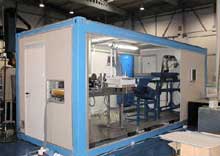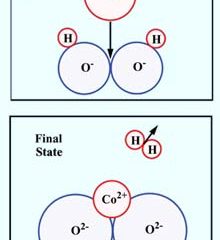Process Engineering
This special field revolves around processes for modifying material properties (milling, cooling), composition (filtration, distillation) and type (oxidation, hydration).
Valuable information is available on a broad range of technologies including material separation, laser processes, measuring techniques and robot engineering in addition to testing methods and coating and materials analysis processes.

Multimode Magnetic Field and Position Sensor from Oxford University
Researchers at Oxford University’s Physics Department have developed an extraordinarily versatile proximity sensor for the detection of objects, composed of ferrous and non-ferrous metals, ceramics, glasses and plastics. This new device could be used as a position or speed sensor in automotive suspension, gearbox and engine management systems, amongst many other uses.
Researchers had identified the need for a relatively simple, but highly versatile proximity sensor to detect the motion of a

Computer vision for the blind
The white cane used by the blind as a travel aid may be universal, but it is not always adequate when it comes to pedestrian crossings. Although some crossings make a sound when it is safe to cross, many do not, and it is at these crossings that the blind need to know when the green man is showing. Adaptations of the white cane have been made, which use laser or ultrasonic waves to detect more distant obstacles, but they do not give information about the width of the road or colour of the traffic lig

New technique has earthquake resistance all wrapped up
Highway columns of glass or carbon fibre help structures meet and exceed building code requirements
Just how trustworthy are disintegrating columns that bulge and expose bent, rusting steel on elevated highways? “They are sitting ducks that, in an earthquake, could crumble,” says Professor Shamim Sheikh of U of T’s Department of Civil Engineering. His team has devised a strong, cost-effective method of structural reinforcement that is already proving its worth on highways and ot

Future advances of 20,000-year-old coatings technology detailed in upcoming Science magazine
DuPont scientist identifies key issues in future coatings technology
Dr. Robert R. Matheson, Jr., one of the world’s foremost scientists on coatings – one of the oldest technologies known to humans – will have his scientific paper “20th- to 21st-Century Technological Challenges in Soft Coatings” featured in the upcoming edition of SCIENCE magazine.
As part of the Aug. 9 edition of SCIENCE, Dr. Matheson, a DuPont senior scientist, details the future of technological adva

`Artificial vision` for recycling copper
The technological centre Robotiker from Zamudio (Basque Country) has developed a system of artificial sight to separate metals that come with copper, in order to obtain high purity copper.
To recover copper from old cables it is not something new. However, the recycled copper is not pure, because it is mixed with other metals, such as lead, aluminium and tin. It is quite complicated to separate copper from those components by using mechanical, physical and other methods. Nevertheless it is

Atomic anchors to quicken computer boot-up
Simple method may improve catalysts, nanodevices
A way to help next-generation computers boot up instantly, making entire memories immediately available for use, has been developed by researchers at Sandia National Laboratories and Pacific Northwest National Laboratory.
The patented technique is able to deposit flat, ultrathin metallic layers on very thin oxide layers. The thinness of the deposition reduces material cost and requires less electricity to produce more rapid mag